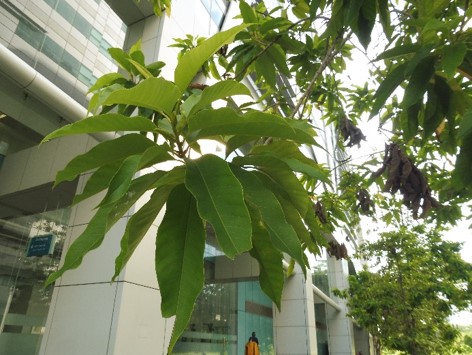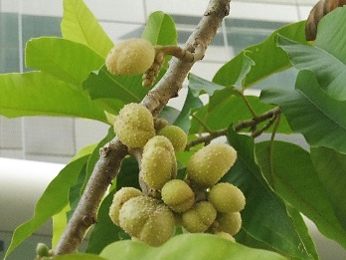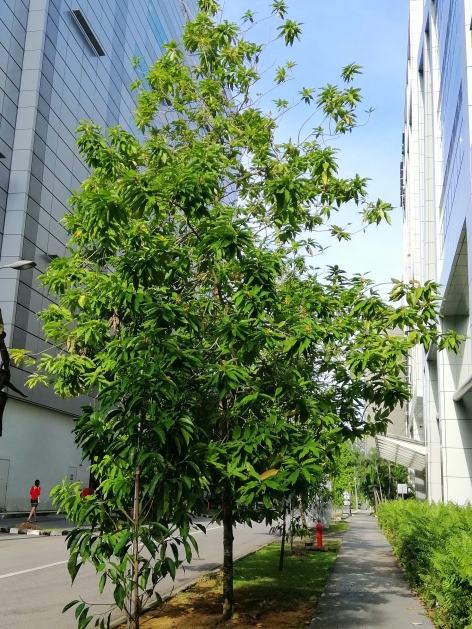Streets in office districts have a tendency to be rather quiet in the afternoons, when everyone’s working off their lunch and caffeine. Which, I suppose, is why an elderly not-so-gentleman decided to pick that time to- very unceremoniously and expressionlessly, I might add- whack flowers off their perches from a whole laneful of trees.
Anyhow, as it turns out, that was the Magnolia champaca, affectionately known as the Champak. Native to South Asia, Southeast Asia to Indochina, and South China, this is a member of the Magnolia genus, and in its native environment can grow up to 50m tall. Those along Singapore’s roads, however, tend to be younger and certainly aren’t anywhere close. In tropical countries such as Singapore, it’s evergreen (its leaves are green all year round), but in countries with distinct seasons, it does shed its leaves accordingly. The Champak is actually quite a distinctive tree that’s hard to mistake. For one, its long, elliptical leaves grow in clusters, arranged spirally along its rather spindly and twisty branches.

A cluster of leaves
Flowers are white to orange, with a distinct and pleasant fragrance.

This one is yellow
Each flower develops into a grape-like bunch of fruits, green when unripe, and brown and dry when ripe. The dry pods split open to reveal red seeds, the arils of which appear to be very attractive to birds. A tree grown from seed can take 8-10 years to flower, whilst those asexually propagated are able to flower within 2-3.

A bunch of unripe fruits
Whilst the different parts of the tree have various uses, it’s the flowers that are best known. Besides being used as fragrant decorations, particularly in India, it can also be distilled into or included in a perfume. They’re also used in religious ceremonies, particularly in the worship of Jain and Hindu gods. It’s also believed in Tibet that the next Buddha will find enlightenment under the Champak tree. The timber of the tree can be used for instruments or furniture, whilst the bark is used in traditional medicine to treat fevers and as a protective medicine after childbirth. The bark is also sometimes used in the adulteration of cinnamon. Leaves, similarly, are used in traditional medicine as a treatment against colic. The seeds are used to treat badly chapped skin, and fatty oils from the seeds have been shown to have some activity against bacteria as well.

Pretty
This particular fellow wasn’t actually doing so well in the past, sporting a fair number of yellowing and browning leaf clusters, but appears to have perked up in the recent months and started flowering too, just in time for Christmas!
References
- http://tropical.theferns.info/viewtropical.php?id=Magnolia+champaca
- https://en.wikipedia.org/wiki/Magnolia_champaca
- https://florafaunaweb.nparks.gov.sg/special-pages/plant-detail.aspx?id=3025


